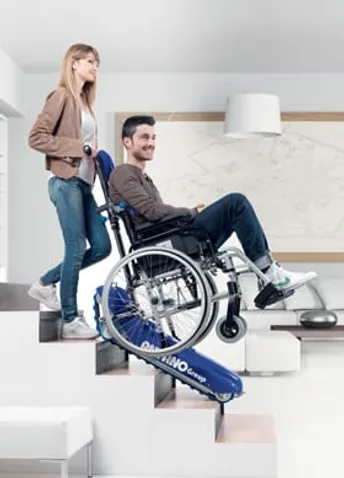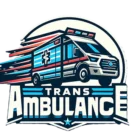Stretcher-Gurney, Wheelchair, Out-Patient Transportation Services
Stair Up Or down

Getting one up or down the stairs
When a Non-Emergency Medical Transportation (NEMT) provider needs to transport an injured or sick person up or down the stairs, they follow a specific process to ensure the safety and comfort of the patient. Here is a step-by-step guide for bringing a person up or down the stairs in a NEMT setting:
Assess the situation: Before attempting to move the patient, assess their condition and the feasibility of navigating the stairs. Consider factors such as the patient’s weight, mobility, and any medical equipment they may be using.
Request assistance if needed: If the patient’s condition or the nature of the stairs makes it challenging for a single NEMT provider to safely move them, request additional personnel or specialized equipment, such as a stair chair or a lift.
Communicate with the patient: Inform the patient about the plan and the need to move them up or down the stairs. Obtain their consent and provide reassurance throughout the process.
4. Prepare necessary equipment: Gather the required equipment based on the patient’s condition and available resources. This may include a stair chair, a lift, or other assistive devices designed for stair navigation.
5. Clear the pathway: Remove any obstacles or hazards that could impede the movement of the patient or the equipment. Ensure the stairs are clear of debris, loose items, and tripping hazards.
6. Position the equipment: If using a stair chair, position it at the bottom of the stairs with one or more NEMT providers on each side. If using a lift, ensure it is appropriately positioned, stable, and secure.
7. Assist the patient onto the equipment: Using proper lifting techniques, carefully transfer the patient onto the designated equipment, ensuring their comfort and safety. Secure them using the provided restraints or straps, if applicable.
8. Coordinate the movement: Assign roles to the NEMT providers involved in the transport. Designate a lead provider to control the movement and ensure a smooth and coordinated effort.
9. Ascend or descend the stairs: Follow the manufacturer’s instructions or training protocols specific to the equipment being used. Maintain clear communication and synchronized movement, taking small and controlled steps.
10. Monitor the patient: Throughout the stair navigation, closely observe the patient’s vital signs, symptoms, and overall well-being. Communicate with the patient, offering reassurance and support as needed.
11. Complete the transport: Once the patient has been safely moved to the desired location, carefully transfer them back onto a bed, wheelchair, or other appropriate surface, ensuring their comfort and stability.
12. Reassess the patient: After the transport, conduct a thorough assessment of the patient’s condition, checking for any changes or new injuries that may have occurred during the process.
It is important to note that NEMT providers should receive proper training on patient handling, equipment usage, and safety protocols. Always prioritize the well-being and dignity of the patient during the entire process of stair navigation.
